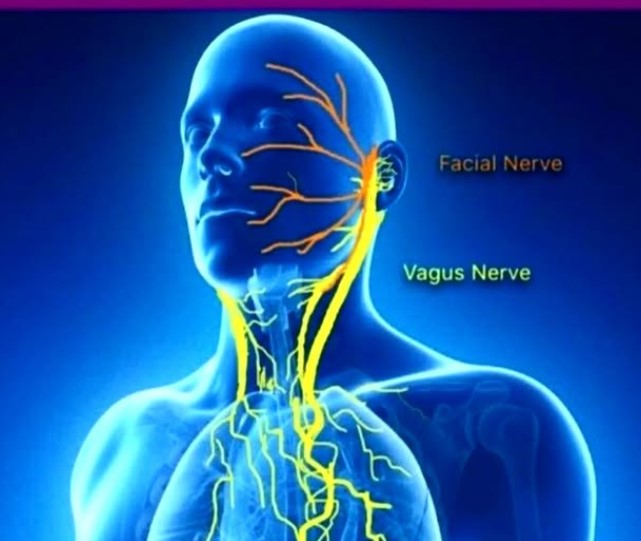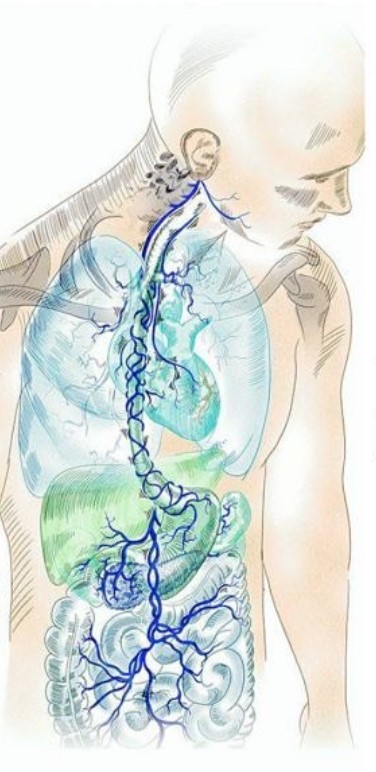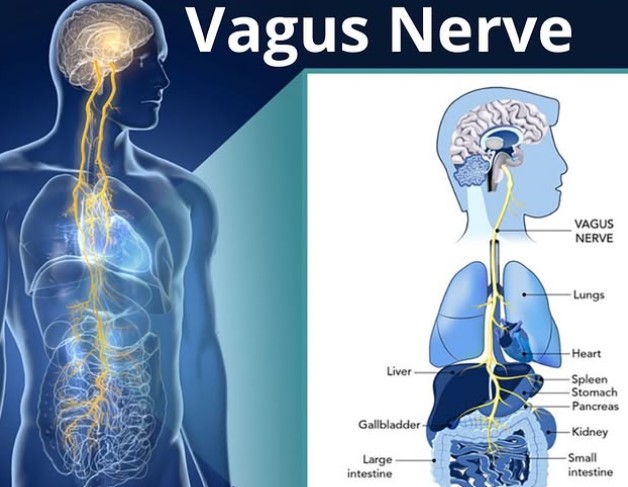Your brain is connected to your body via 12 major cranial nerves, and among them, the vagus nerve stands out as one of the most critical. This sprawling network governs an impressive array of bodily functions — from digestion and breathing to heart rate and reflexes — and is increasingly recognised for its impact on mental health and mood regulation.
++ Herpes virus rapidly reprogrammes human DNA within an hour
Unlike the rapid-fire reactions of the sympathetic nervous system — responsible for the well-known ‘fight or flight’ response — the vagus nerve controls the slower ‘rest and digest’ functions within the parasympathetic nervous system. It comprises two thick bundles of neurons, one on each side of the body, originating in the brain and branching out through the base of the skull to the major organs.
Around 100,000 sensory neurons on each side of the vagus nerve relay vital information from the body to the brain. These neurons detect a range of internal conditions — from gut bacteria to blood oxygen levels and blood vessel stretching. A smaller number of motor neurons complete the two-way traffic, sending commands from the brain to the organs and regulating muscle actions, such as speech and swallowing.
In essence, the vagus nerve acts as a command centre for involuntary bodily functions. It plays roles in appetite, immune response, orgasm, and even sneezing — a true polymath of the nervous system.
Given the vagus nerve’s importance, it’s no surprise that it has become a focus for medical research. Clinicians may stimulate the nerve using specific techniques — called ‘valsalva manoeuvres’ — to help with issues such as irregular heartbeats. These include coughing, bearing down, or even performing a handstand.
The nerve’s name, from the Latin “vagus” meaning “wandering”, reflects its broad reach. As the body’s longest cranial nerve, it winds through the chest and abdomen, connecting to vital organs like the lungs, liver, and intestines. Once known as the pneumogastric nerve for its ties to the lungs and stomach, it is a cornerstone of the parasympathetic system, which kicks in to calm the body after stress.
In stressful situations, the sympathetic nervous system acts rapidly, raising heart rate and alertness. The vagus nerve helps counterbalance this by calming the body and restoring homeostasis. However, this balance can be disrupted by conditions such as irritable bowel syndrome or mental health disorders like depression. Ongoing stress can lead to sympathetic dominance, where the body remains in a heightened state, with the vagus nerve unable to properly engage.
One way scientists measure this imbalance is through heart rate variability (HRV). Healthy HRV indicates a well-functioning vagus nerve and nervous system flexibility, whereas low HRV suggests stress and diminished parasympathetic activity.
In the past, severe stomach ulcers were treated by cutting the vagus nerve below the ribs to reduce acid secretion. Though largely obsolete due to modern medication, these ‘vagotomies’ demonstrate how integral the nerve is. Severing it can lead to major issues, including an inability to digest or excrete food without additional surgical intervention.
Other conditions, such as gastroparesis, often result from damage to the vagus nerve caused by diabetes, infection, or medication. The consequences can be debilitating, highlighting the nerve’s essential role in everyday functions.
++ Shy yellow boxfish and banded pipefish filmed exploring reef together
Today, researchers are exploring devices that electrically stimulate the vagus nerve as treatment for conditions such as epilepsy and severe depression. The method has roots in 19th-century neurology, but only recently has the technology become viable and widely adopted.
More than 100,000 people have received vagus nerve implants — usually placed in the chest — to help reduce seizures. In some cases, these devices have led to a 75% reduction in episodes. Some implants are also approved to treat chronic headaches and depression.
Still, not everyone is comfortable with such medical interventions. Many turn instead to natural methods for vagus nerve stimulation, including yoga, meditation, deep breathing, hypnotherapy, and exposure to cold water. Even splashing the face with cold water is believed to stimulate the nerve and improve parasympathetic tone.
Though we’ve learned much about the vagus nerve, scientists believe there is still more to uncover. As we continue to understand this intricate nerve network, we may unlock new therapies for a range of physical and mental health conditions — offering hope for more holistic approaches to wellbeing in the future. Let me know if you’d like a version with image captions or headline formatting for publication layout.





